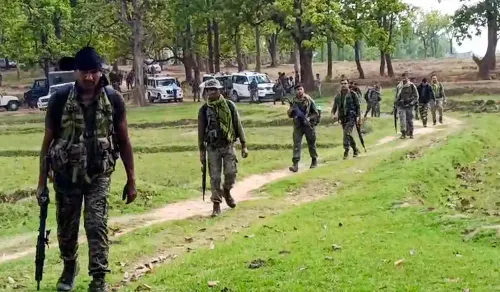Is the Bangladesh Economy Entering a Fragile Phase?

Synopsis
Key Takeaways
- Bangladesh's GDP growth has slowed to 3.97%.
- Inflation is rising, particularly in non-food sectors.
- Investor confidence is declining.
- The banking system has the highest NPL ratio in Asia.
- Export earnings from the garment sector are falling.
New Delhi, Nov 26 (NationPress) The economy of Bangladesh is currently in a delicate state, characterized by a slowdown in growth, increasing inflation, declining investor confidence, and a frail banking system, as per a report from local media.
The International Monetary Fund (IMF) revealed in its October 2025 Country Report that there are three critical vulnerabilities: persistently low tax revenues, inherent instability in the financial sector, and high inflation, according to the Dhaka-based newspaper The Daily Star.
In the previous fiscal year (FY 2024–25), the GDP growth rate decreased to 3.97 percent, according to the Bangladesh Bank's Economic Review (October 2025), significantly lower than the average of about 6 percent over the past decade.
From 2006 to 2022, the poverty rate fell from 41.5 percent to 18.7 percent, according to the World Bank Poverty & Equity Brief (April 2023).
However, it is now anticipated that the poverty rate, based on the international threshold of $3/day, will rise to 8.9 percent, potentially pushing approximately 1.2 million individuals into a state of vulnerability, as stated in the World Bank Macro Poverty Outlook, October 2025.
In Dhaka, extreme poverty is expected to climb to 9.3 percent, affecting around 3 million people. The investor confidence has also seen a decline, according to the report from The Daily Star.
In March 2025, Moody's Investors Service downgraded the outlook of Bangladesh's banking system from stable to negative, citing heightened credit risks, worsening macroeconomic conditions, and political unrest.
Although inflation has slightly eased due to a drop in food prices, non-food inflation rose to 9.13 percent in October 2025, up from 8.98 percent in September. Living expenses continue to escalate, making household essentials, transport fares, and rent increasingly unaffordable, the report indicates.
According to the Labour Force Survey 2024 (preliminary) of BBS, the employment rate fell to 56.7 percent in 2024, with job losses predominantly seen in the service sector. Wage growth has stagnated while inflation continues to diminish purchasing power.
On the financial side, Bangladesh now has the highest non-performing loan (NPL) ratio in Asia. As per the Asian Development Bank's Financial Stability Monitor (2025), NPLs rose to 20.2 percent of total loans in 2024.
Non-bank financial institutions (NBFIs) have faced even greater challenges, with bad loans reaching 33.83 percent and their Capital to Risk-Weighted Asset Ratio (CRAR) becoming negative at 6.46 percent, as observed in the report.
These statistics highlight profound structural weaknesses within the financial system. Deposits have slowed, and numerous banks are struggling to fulfill reserve requirements, further limiting credit flow to the private sector.
The report also notes that the ready-made garment sector, a crucial element of Bangladesh's export economy, is beginning to show signs of strain.
According to data from the Export Promotion Bureau (EPB), export earnings have declined for three consecutive months: 2.93 percent in August, 4.61 percent in September, and 7.43 percent in October 2025. Woven garment exports decreased by 5.33 percent, while knitwear exports dropped by 10.76 percent in October.
Industry insiders, including BGMEA and BKMEA, attribute this downturn to various factors, including global tariff pressures, loss of competitiveness, and the emergence of China-supported African textile hubs, as noted in the report.









